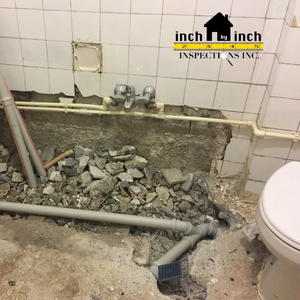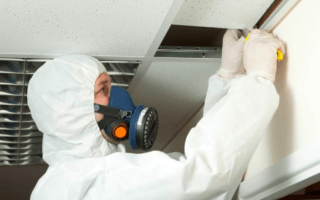
Asbestos testing is a process of evaluating a material for the presence of asbestos-containing fibers, and it is an integral part of any asbestos abatement project. An important aspect of asbestos testing is that it helps to determine if and where asbestos is located and should be safely removed. Whether you are looking to buy or sell property, or you are seeking to demolish and renovate your space, understanding the dangers of asbestos is essential.
What Is Asbestos?
Asbestos is a naturally occurring mineral that is composed of microscopic particles. These particles are made up of tiny fibres that are resistant to heat, fire, chemicals, and electricity. Asbestos was once widely used in various materials such as insulation, flooring, roofing, gaskets, brake linings, automobile parts, construction materials, and more. Prior to the dangers of asbestos being widely recognized, asbestos was commonly used due to its heat and chemical resistance.

The Hazards Of Asbestos Exposure
Today, asbestos is considered a known carcinogen, meaning it has been linked with cancer formation. When asbestos fibers are inhaled, they can become lodged in the lungs and other areas of the body. Over time, these fibers accumulate and can cause serious breathing problems including difficulty breathing, chest pain, and coughing. Exposure to asbestos also increases the risk of developing a type of cancer called mesothelioma.
Is Asbestos Testing Necessary?
In short, yes. Asbestos testing is necessary when renovating, remodeling, or demolishing any structure built before 1970. The only way to properly evaluate the safety of a building is by testing for the presence of asbestos. This is true regardless of whether the building is residential, commercial, or industrial.
How Is Asbestos Testing Conducted?
When conducting asbestos testing, samples are taken from materials that may contain asbestos, such as insulation, roof shingles, walls, etc. These samples are then sent to a laboratory for analysis. In some cases, a visual inspection may also be performed. During a visual inspection, an experienced inspector will look for signs of asbestos such as crumbling material or damaged insulation.
Conclusion
Asbestos testing is an important step in ensuring the safety of any property, especially those built before 1970. It is essential to have a professional inspect and test any building or renovation project for the presence of asbestos. If asbestos is present, then a qualified professional must remove the material before demolition or renovation can take place. By following proper protocol, you can keep yourself, your family, and others safe from the risks associated with asbestos exposure.
Asbestos testing is a must for all buildings in order to ensure the safety of occupants. Asbestos is a naturally occurring mineral that has been used in building materials since the Second World War. Asbestos fibers are highly toxic when inhaled or ingested and can cause serious respiratory diseases, such as asbestosis and mesothelioma. Asbestos testing is used to detect and identify the presence of asbestos in buildings or other materials, including home insulation, floor tiles, and other construction materials.
Asbestos testing is a complicated process that involves trained professionals using special equipment and techniques. Samples are taken from the suspected material and tested in a laboratory to look for asbestos. If asbestos is present, the amount of asbestos can then be determined. Proper asbestos testing is essential to maintain safe working environment and to prevent potential health risks. The Environmental Protection Agency requires that all buildings built before 1980 be tested for asbestos before being remodeled, demolished, or renovated.
